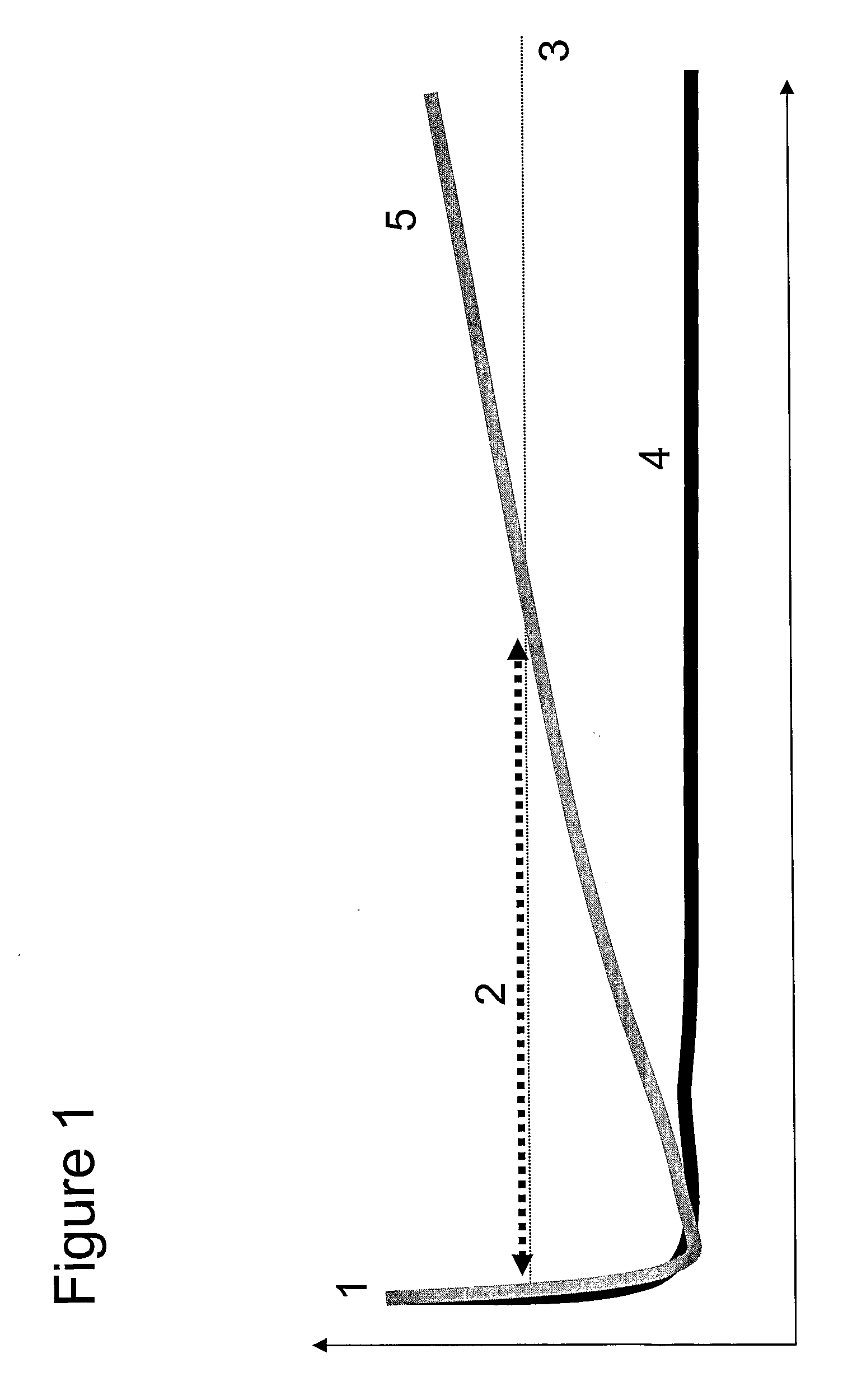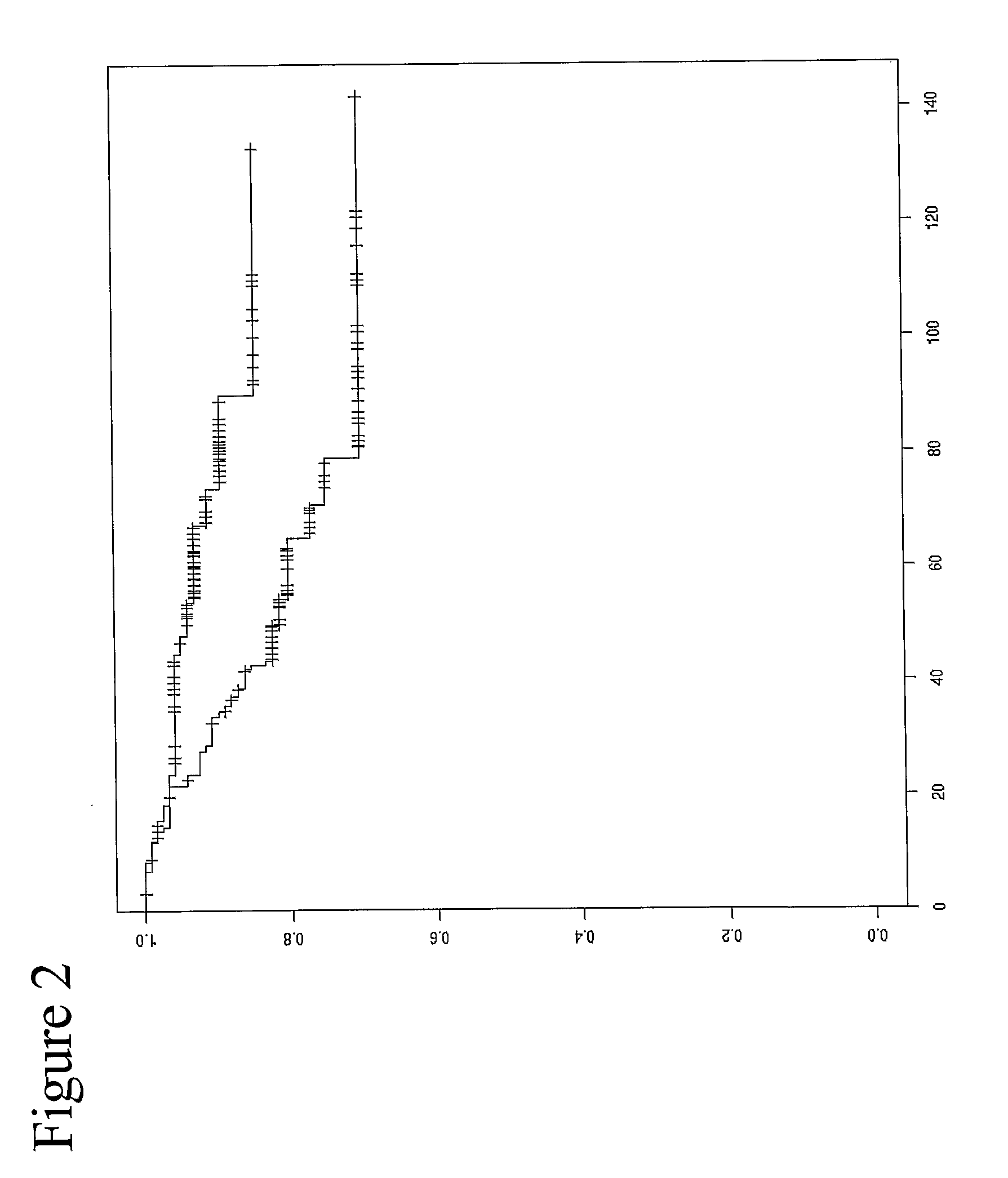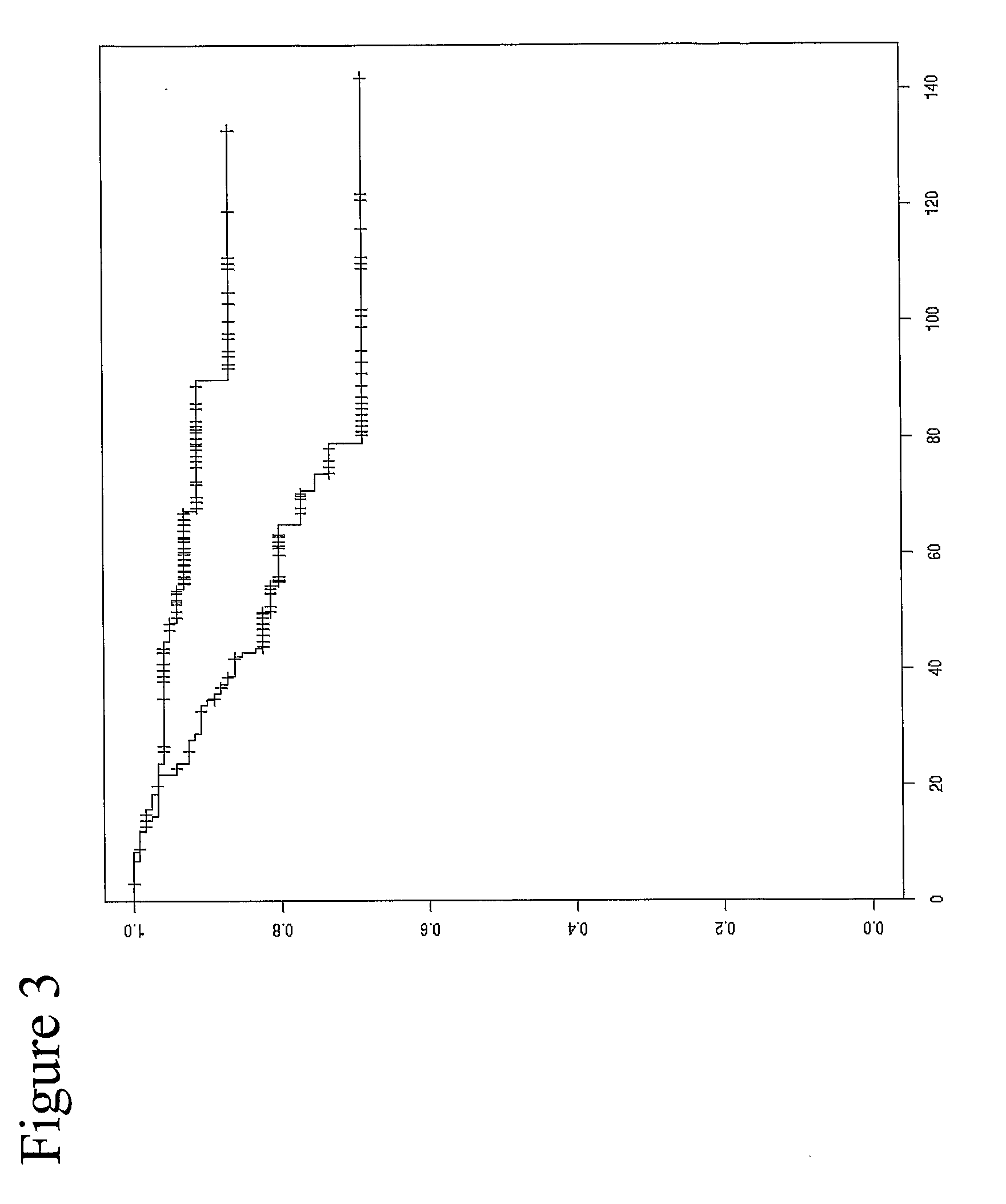Prognostic markers for prediction of treatment response and/or survival of breast cell proliferative disorder patients
- Summary
- Abstract
- Description
- Claims
- Application Information
AI Technical Summary
Benefits of technology
Problems solved by technology
Method used
Image
Examples
example 1
[0301]Study 1. The first study was based on a population of 109 patients, comprising patients of both nodal statuses N0 and N+. All patients were ER+ (estrogen receptor positive). All patients received Tamoxifen monotherapy immediately after surgery or diagnosis. The samples were analyzed using the applicant's chip technology with two chip panels representing 117 candidate genes. For further details see examples in the published patent applications WO 04 / 035803 and EP 03 090 432.0, which are hereby incorporated by reference. In this study one of the most significant marker genes was PITX2. The methylation status of PITX2, coding for a transcription factor, was statistically significantly correlated with disease-free survival of patients undergoing adjuvant Tamoxifen treatment. This was calculated using the Cox regression model taking into account the nodal status of the patient at the time of diagnosis.
[0302]Results. The result from this study, with respect to PITX2, is illustrated ...
example 2
[0305]Study 2. The second study was based on samples from 236 patients from 5 different sample providers, wherein all patients were N0 (nodal status negative), and older than 35 years. In all cases surgery was performed before 1998. All patients were ER+ (estrogen receptor positive), and the tumors were graded to be T1-3, G1-3. In this study all patients received Tamoxifen directly after surgery, and the outcome was assessed according to the length of disease-free survival. In order to be as representative as possible for the final target group, the patients and their tumor samples had to fulfill the following criteria:
The range and median follow-up of patients were the following:
Median: 64.5 months
Range: 3 months to 142 months
(calculated based on patients who were disease-free at end of observation time).
[0306]Analysis of the methylation patterns of patient samples treated with Tamoxifen as an adjuvant therapy immediately following surgery (see FIG. 1) is shown in the plots accordi...
example 3
[0312]The accuracy of the differentiation between the different groups was further increased by combining multiple oligonucleotides from different genes. As described in the text it was recognized that adding additional informative markers to the analysis could potentially increase the prognostic power of a survival test. Therefore it was calculated how a combination of two methylation specific oligonucleotides each from the genes TBC1D3 and CDK6, and one oligonucleotide from the gene PITX2 would differentiate the groups of good or bad prognosis. The result is shown in FIG. 8 as the according Kaplan-Meier curve.
[0313]FIG. 9 shows, on top of FIG. 8, the classification of the patients from the sample set by means of the St. Gallen method (the current method of choice for estimating disease free survival), thereby showing the improved effectiveness of methylation analysis over current methods, in particular post 80 months.
[0314]Real time quantitative methylation analysis. Genomic DNA w...
PUM
| Property | Measurement | Unit |
|---|---|---|
| Time | aaaaa | aaaaa |
| Volume | aaaaa | aaaaa |
| Molar density | aaaaa | aaaaa |
Abstract
Description
Claims
Application Information
 Login to View More
Login to View More - R&D
- Intellectual Property
- Life Sciences
- Materials
- Tech Scout
- Unparalleled Data Quality
- Higher Quality Content
- 60% Fewer Hallucinations
Browse by: Latest US Patents, China's latest patents, Technical Efficacy Thesaurus, Application Domain, Technology Topic, Popular Technical Reports.
© 2025 PatSnap. All rights reserved.Legal|Privacy policy|Modern Slavery Act Transparency Statement|Sitemap|About US| Contact US: help@patsnap.com



